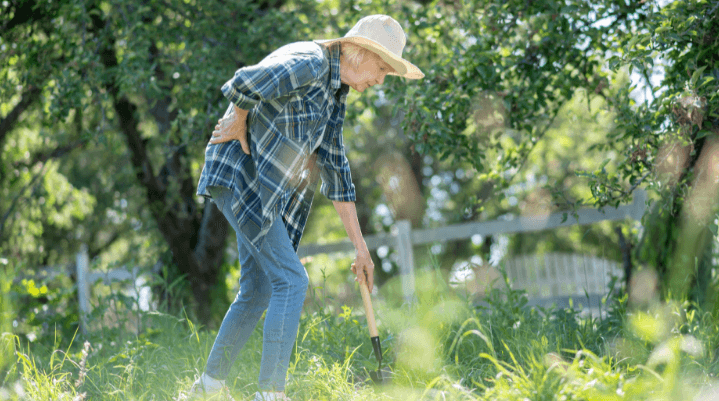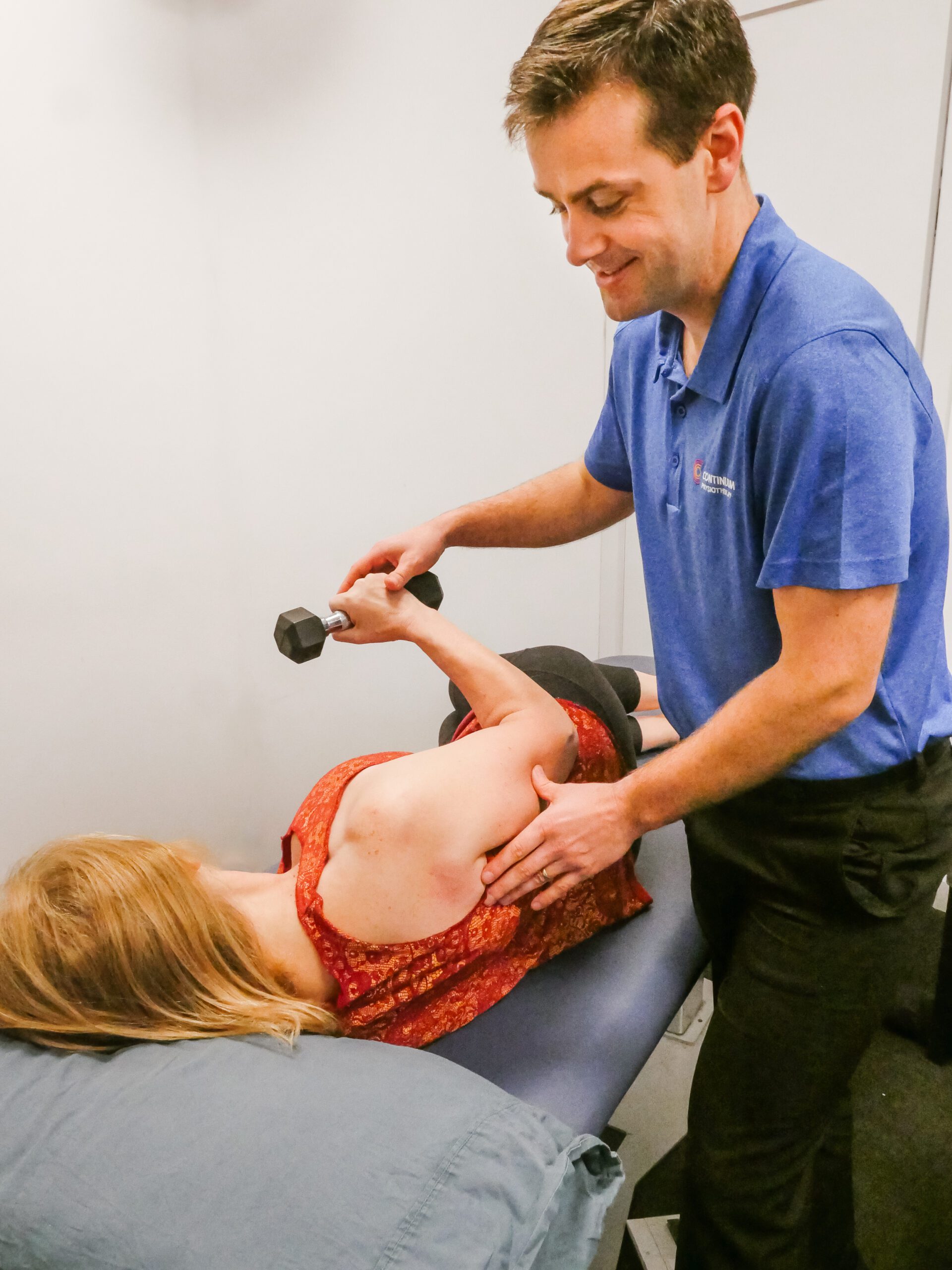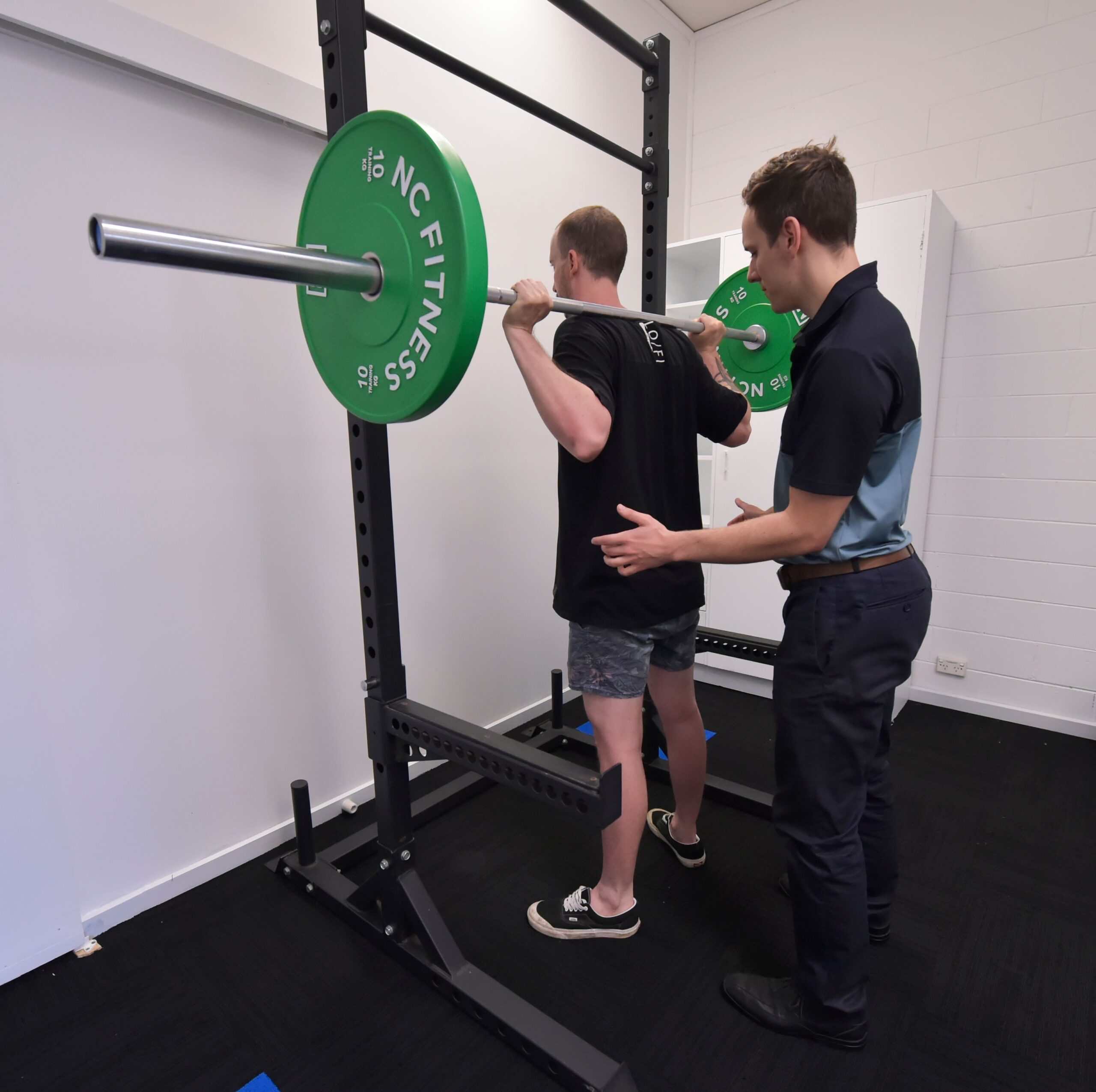Creating Good Habits

Late last year, myself and physiotherapist Luke Dowse had the pleasure of attending a presentation given by James Clear, author of the world-renowned book “Atomic Habits.” The presentation featured various personal growth and development philosophies discussed in the book, which as a whole centres around the formation of good habits. Throughout the presentation, we found that many of the concepts resonated with us not just on a personal level, but also professionally with respect to our day-to-day interactions with patients.
As physiotherapists, we are in a unique position to not only help manage an injury or condition face-to-face during a consultation, but also guide and empower patients to have the tools and skills to self-manage their own condition moving forward – helping patients build good habits, if you will. This is ultimately where long-term sustained results are achieved. The problem is that building good habits and changing behaviour is extremely hard!

As an example, imagine you have just seen one of us at the clinic for a flare up of low back pain after pulling weeds in the garden. Over the last month of weekly sessions, you have had some manual therapy to manage muscle spasm and pain, and you were diligent with your daily exercise program. Your pain is now gone and you no longer have to come for treatment. Your exercise sheet goes from fridge art to fire starter, and you go back to your old routine and everything is great. But those weeds don’t stop growing, and in a few weeks they’ll need to be picked again. Will your body be ready to handle this task when the time comes? Are you confident that you can pick them again without experiencing another flare-up? – In other words, have you created a habit of continuing to exercise and improving your strength and overall capacity to help prevent another injury?
James Clear talks about the 4 laws of every habit:
Cue – Craving – Response – Reward
The cue is the thing that grabs our attention and predicts a possible reward.
The craving is triggered by the cue, and is our desire for the reward and our motivation to act.
The response is our habit, and how we act to obtain the reward.
The reward is the end goal, the state that satisfies our craving and teaches us whether or not our actions were worth it.
Together, these steps form a recurring loop that if complete, help to form habits. When incomplete, new habits are not formed and existing habits are broken.

Returning to our previous example – all too often, we see people develop the habit of relying on health practitioners to “fix” them when they experience an increase in pain, particularly with respect to long-term recurring issues. That’s not to say we don’t love helping patients and being a part of their journey (That’s why we love what we do!), and there are certainly many cases where specific conditions do need to be managed and guided appropriately by a professional. But part of the problem becomes when patients become so used to getting “fixed” or “adjusted,” that they lose their “internal locus of control” – in other words, their ability to feel empowered and feel in control of managing their own pain. I discuss this in much more detail in the Chronic pain article series, so you can go back and read those if you need a bit more insight into this phenomenon.

In our example, this habit involves pain as the cue. The cue of pain causes us to crave relief, so we go to the **INSERT HEALTH PRACTITIONER HERE **, who makes us feel better. A fantastic short-term outcome! However if pain continues to be the cue for the reward of pain relief, there is no habit that is formed for the prevention of this pain in the first place. As stated before, having the tools and skills to self-manage a condition, and work to prevent a condition from recurring, is where long-term sustained results are achieved.
Using the 4 laws of every habit, James Clear talks about ways each level might be modified to help either create a good habit, or break a bad one.
| How To Create a Good Habit | How To Break a Bad Habit | |
|---|---|---|
| Cue | Make It Obvious | Make It Invisible |
| Craving | Make It Attractive | Make It Unattractive |
| Response | Make It Easy | Make It Difficult |
| Reward | Make It Satisfying | Make It Unsatisfying |
With our example, it is unlikely that “pain relief” will be unsatisfying for anyone, and while a poorly skilled physio who is never available would be one way to break this cycle, we pride ourselves at Continuum Physiotherapy on our inclusivity, accessibility, and our clinical skills and knowledge, so we would certainly not want ‘unattractive,’ ‘difficult,’ or ‘unsatisfying’ as reasons for not seeking our help. Therefore, the best way to break this habit is to make the cue invisible and stop the cue of pain from happening from the start.



How do we do this? Well, we create good habits for active engagement in rehab and exercise even after your pain or condition resolves. With this, the cue becomes a trigger to exercise, the craving becomes us wanting to exercise and be active, the response is performing the exercise, and the reward again is pain relief, along with the many other well-established benefits of exercise and physical activity. Same reward, two completely different habits – one empowering, one not so much.
With all of this information, and backed by the philosophies discussed by James Clear throughout his presentation, we have provided a list here of some tips at each level to help create good habits for exercise, injury prevention, and self-management of pain conditions – so that pain doesn’t have to become your cue for action.
| Cue – Make It Obvious |
|---|
| -Keep your home-exercise sheet on the fridge -Hang your exercise band in a place that you will walk by or see often -Download an app to keep your exercise program (like PhysiApp), and set regular notifications to remind you to do them -Follow Continuum Physiotherapy on Instagram so we become a regular guest on your newsfeed |
| Craving – Make It Attractive |
|---|
| -Keep a checklist for you to tick when you have completed each exercise -Listen to your favourite playlist or podcast while you exercise -Exercise with a friend or partner -Set small challenges for yourself |
| Response – Make It Easy |
|---|
| -Make a weekly exercise plan with your physio so you know what you should be doing each day -Ensure your exercise program is manageable and does not have too many exercises -Schedule specific time each day to do exercise |
| Reward – Make It Satisfying |
|---|
| -Treat yourself with a small reward at the end of each week that you successfully complete your exercise program -Set short term goals to work towards -Take videos of yourself performing some exercises to track your progress over time -Check off exercises as you complete them on an exercise program app (like PhysiApp) |
If you want to discuss more about some ways to help create good exercise habits, or break bad ones, get in touch with us at 9455 1177, or click the button below!


